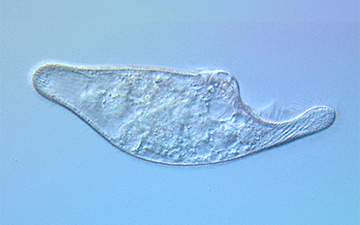Heterotrichea

Blepharisma
Ciliophora phyla


Sorry, there is no photo available. If you have one, please submit
here
.
4 POINTS
Play: Blepharisma has a MOVE of 1, and is considered an HETEROTROPH
Fact: Cilates are characterized by the presence of hair like organelles called cilia.
cool, warm
Graphic by Keeling Labswww3.botany.ubc.ca/keeling/
Blepharisma is a genus of unicellular ciliate protists found in fresh and salt water. The group includes about 40 accepted species, and many sub-varieties and strains. While species vary considerably in size and shape, most are easily identified by their red or pinkish color, which is caused by granules of the pigment Blepharismin.[1] All members […] read more